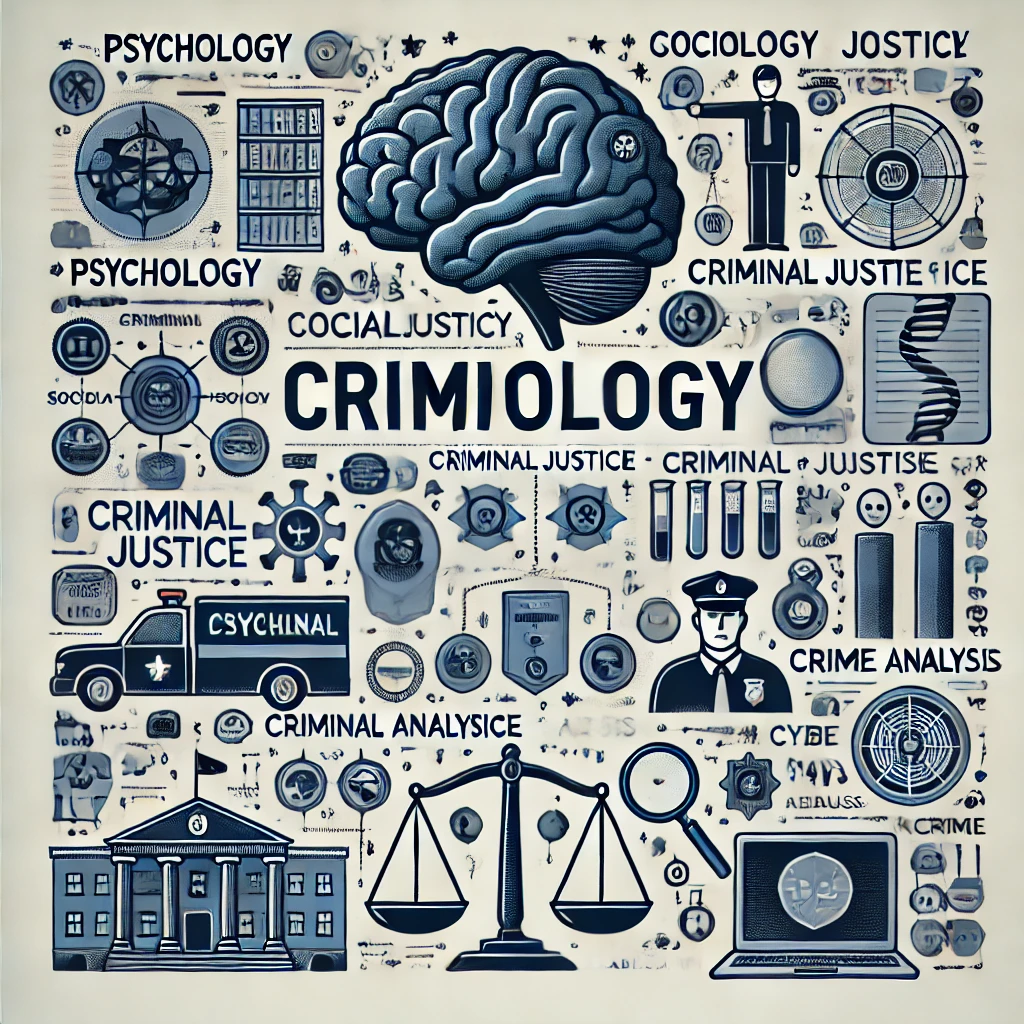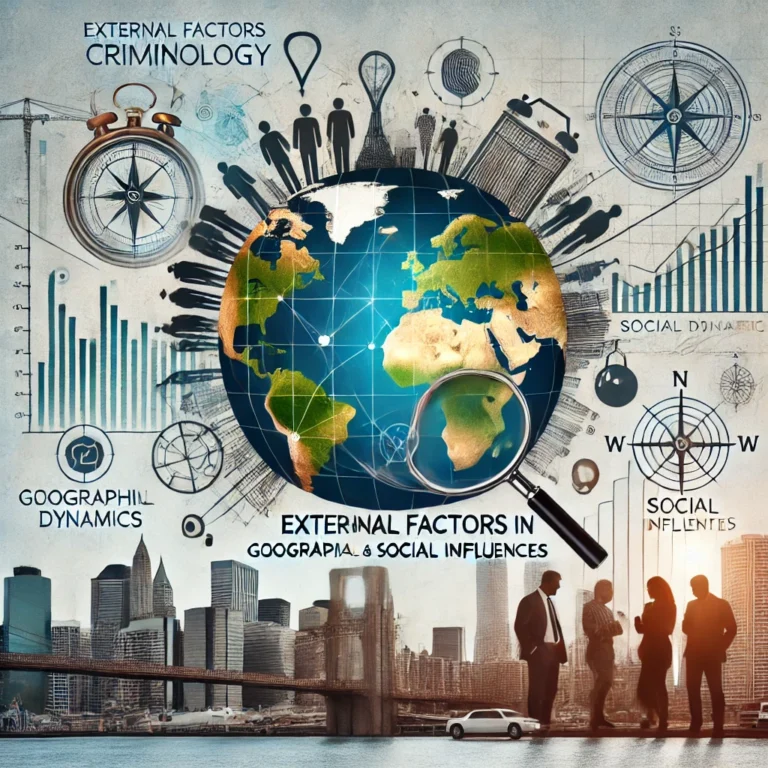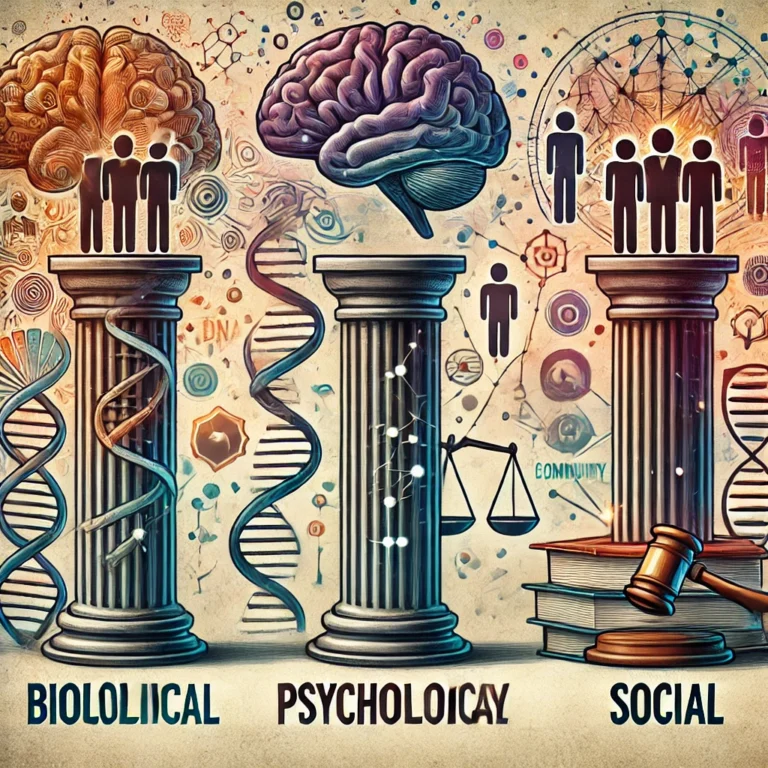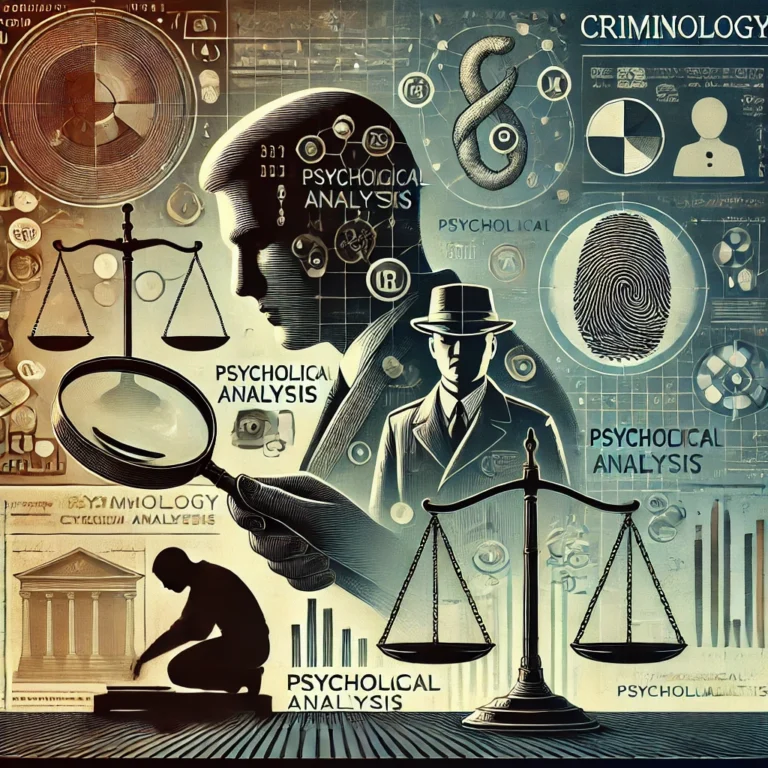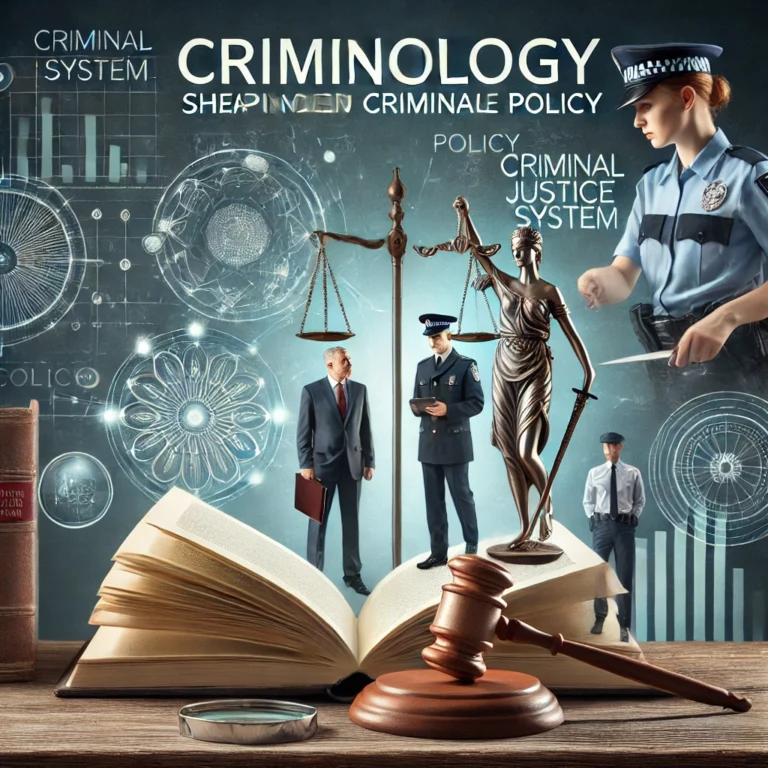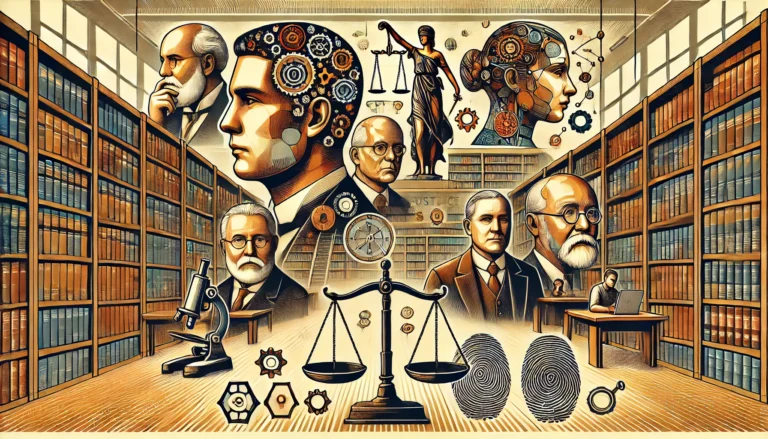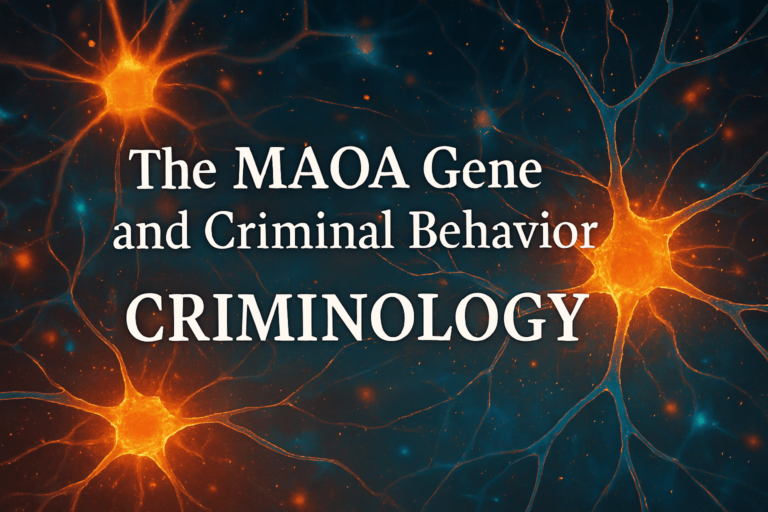What is criminology ?:A Comprehensive Look at Crime and Its Explanations
Introduction to Criminology
Criminology is the field that seeks to understand the dark world of criminal behavior, addressing crime as a social and behavioral phenomenon that requires analysis and interpretation. Moving beyond the superficial view of crime as merely unlawful or unethical behavior, criminology allows us to delve into the motivations behind crime, the surrounding factors influencing criminals, and the development of innovative strategies to combat this phenomenon. Through its various branches, criminology shows how psychology, sociology, and criminal justice contribute to a comprehensive framework for understanding and reducing crime.
As a dynamic discipline, criminology incorporates diverse approaches that allow us to consider not only the actions of criminals but also the broader societal and psychological contexts that contribute to criminality. From the study of individual criminal minds, as seen in criminal psychology, to examining the role of societal structures in shaping behavior through criminal sociology, criminology provides critical insights into why crime occurs, who is most likely to commit it, and what interventions are most effective in preventing it. The field also plays a pivotal role in shaping policies and law enforcement strategies, ensuring that the response to crime is not only effective but just. Whether it is analyzing patterns of criminal behavior, exploring the psychological impact of crimes, or assessing the fairness of judicial processes, criminology offers a comprehensive, evidence-based approach to tackling crime and building safer societies.
Basics of Criminology and Its History
Criminology isn’t a modern field; its roots trace back to ancient civilizations that tried to interpret deviant behavior through various primitive and often supernatural explanations. Early societies attributed crime to divine punishment, curses, or even spiritual forces, reflecting a worldview where the concept of law and justice was closely tied to religion and mythology. As human societies evolved, so did their understanding of crime and punishment. Ancient law codes such as the Code of Hammurabi in Babylon and Roman law began to establish more structured systems of justice that moved away from mystical explanations towards a more rational approach to crime.
In the 18th century, thinkers like Cesare Beccaria advanced the field of criminology by advocating for the importance of clear, structured laws and proportionate punishments. Beccaria’s ideas about justice, such as the rejection of torture and the notion that punishment should be swift, certain, and appropriately aligned with the crime, laid the foundations of modern criminal justice systems. His philosophy emphasized that humans are rational beings capable of making decisions based on the costs and benefits of their actions. As criminology developed over the centuries, it grew to incorporate insights from other disciplines, such as psychology, sociology, and biology. Today, criminology is viewed as a multifaceted discipline that examines crime not as a mere violation of law, but as a complex phenomenon shaped by various societal, environmental, and psychological factors. This chapter provides the historical context and foundation to understand how criminology has evolved from its early roots to become a comprehensive study of crime and justice.
Chapter 2: Theories of Crime
Theories of crime are a central aspect of criminology, providing frameworks through which we can analyze the factors that may lead individuals to commit crimes. These theories are crucial for understanding the various forces at play in criminal behavior and for developing effective crime prevention and intervention strategies. Among the most notable theories is the rational choice theory, which posits that crime is the result of a conscious decision where the offender weighs the potential risks and rewards of committing a crime. According to this theory, individuals act as rational actors, choosing to break the law when the perceived benefits outweigh the risks of getting caught or punished.
Another influential theory is the social theory, which argues that crime is largely the result of environmental factors. This theory emphasizes the role of social structures, such as poverty, family dynamics, and peer influences, in fostering criminal behavior. For instance, individuals raised in high-crime neighborhoods may be more likely to engage in criminal activities themselves due to exposure to crime as a normalized part of their environment.
Psychological theories, in contrast, focus on internal factors such as cognitive distortions, mental health disorders, and personality disorders, which can predispose individuals to criminal behavior. For example, individuals with antisocial personality disorder or psychopathy may engage in crimes without the same moral inhibitions that prevent others from doing so. These psychological factors are crucial in understanding the individual variations in criminal behavior and how certain people may commit acts that others would deem unthinkable.
Each of these theories contributes a unique perspective on why crime occurs, and together they help to form the basis of criminological research and policy development aimed at addressing and preventing criminal activities.
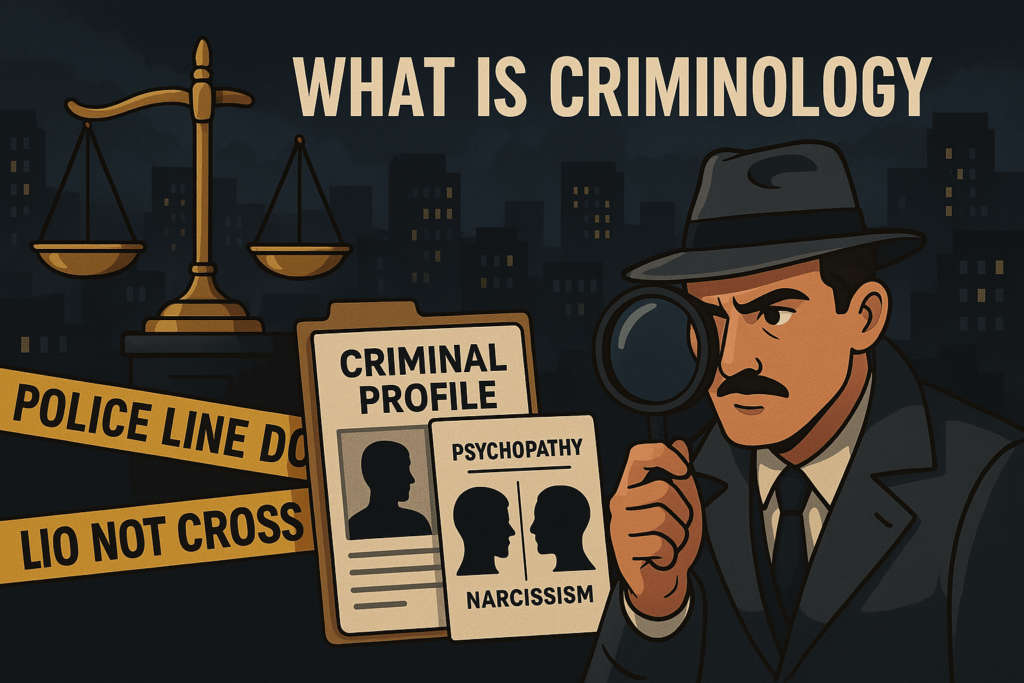
Chapter 3: Criminal Psychology
Criminal psychology is one of the most fascinating branches of criminology, as it delves into the internal world of the offender. It seeks to understand what drives individuals to commit crimes, focusing on the psychological processes and disorders that underlie criminal behavior. Many criminal cases, particularly violent or serial offenses, can be traced to psychological conditions such as psychopathy, narcissism, or severe mental illness. These disorders often lead to distorted perceptions of reality, a lack of empathy, and a propensity for violence.
In criminal psychology, a key aspect is the study of criminal profiling, where psychologists create detailed profiles of offenders to predict their behavior and assist in investigations. Profilers analyze various aspects of a crime scene, such as the victim’s background, the crime’s method of execution, and the behavior exhibited by the offender, to build a psychological portrait. This technique helps law enforcement narrow down suspect lists and anticipate potential future actions.
Criminal psychology also plays an essential role in understanding the psychological impact of crime on both the victim and the perpetrator. By examining the mental state of offenders, psychologists can determine whether they were acting under duress, experiencing mental illness, or acting with full cognitive awareness. This information is vital in determining the appropriate level of punishment or rehabilitation in the criminal justice system.
Chapter 4: Criminal Sociology
Criminal sociology explores the ways in which social structures, cultural norms, and societal institutions contribute to criminal behavior. The field examines how social factors such as poverty, inequality, education, family structure, and peer pressure can influence individuals’ likelihood of committing crimes. A key concept in criminal sociology is the strain theory, which posits that individuals who are unable to achieve societal goals through legitimate means may resort to crime as a way to achieve success. For example, people in impoverished areas may turn to drug dealing or theft as a means of achieving economic success when they lack access to educational or employment opportunities.
Moreover, criminal sociology investigates the role of societal institutions such as schools, media, and the legal system in either exacerbating or mitigating crime. For example, mass incarceration in certain communities may create a cycle where criminal behavior is perpetuated across generations. Criminologists also study how societal attitudes towards crime influence public policy, as public fear of crime can often result in harsher laws and punitive measures that may disproportionately affect marginalized communities.
This chapter emphasizes the importance of understanding the social context in which crime occurs, providing insights that are crucial for developing crime prevention strategies, such as improving education, creating economic opportunities, and fostering community cohesion.
Chapter 5: Criminal Behavior Analysis
Criminal behavior analysis is a vital tool in criminology that involves studying patterns in criminal actions to predict and prevent future offenses. By examining the behaviors and motivations of criminals, criminologists and law enforcement agencies can develop profiles that help identify likely offenders and patterns of criminal activity. Criminal behavior analysis often focuses on specific types of crimes, such as serial murders, organized crime, or cybercrime, to identify recurring traits and strategies used by offenders.
The analysis is not limited to criminal acts but extends to understanding the psychological and sociological factors that may influence behavior. Criminal behavior analysis involves the collection of data from crime scenes, witness statements, and forensic evidence, as well as psychological evaluations of suspects. This information is then used to create predictive models and strategies for crime prevention, enabling law enforcement to intervene before crimes are committed.
This chapter also discusses the use of criminal behavior analysis in the judicial system, where it can be used to assess the likelihood of reoffending, aid in sentencing decisions, and contribute to rehabilitation planning.
Chapter 6: Criminal Psychology in Violent Crimes
Violent crimes, such as murder, assault, and domestic violence, require an in-depth understanding of the psychological motivations behind them. Criminal psychology is crucial in analyzing the mental state of individuals who commit such acts, as violent crimes are often rooted in deep emotional turmoil, unresolved psychological issues, or a history of trauma. In some cases, violent offenders may have experienced significant childhood abuse or neglect, which shapes their emotional and behavioral responses in adulthood.
Criminal psychology also explores the role of personality disorders, such as borderline personality disorder or antisocial personality disorder, in influencing violent behavior. These disorders can impair an individual’s ability to empathize with others, leading to aggressive or violent actions in certain situations. This chapter highlights how psychological factors, such as a desire for control, revenge, or emotional release, often drive individuals to commit violent crimes.
Furthermore, this chapter examines the role of societal factors such as exposure to violence, substance abuse, and media portrayals of violence in shaping violent criminal behavior. By understanding these psychological and social influences, criminologists and law enforcement agencies can develop more effective interventions and prevention strategies for reducing violent crime.
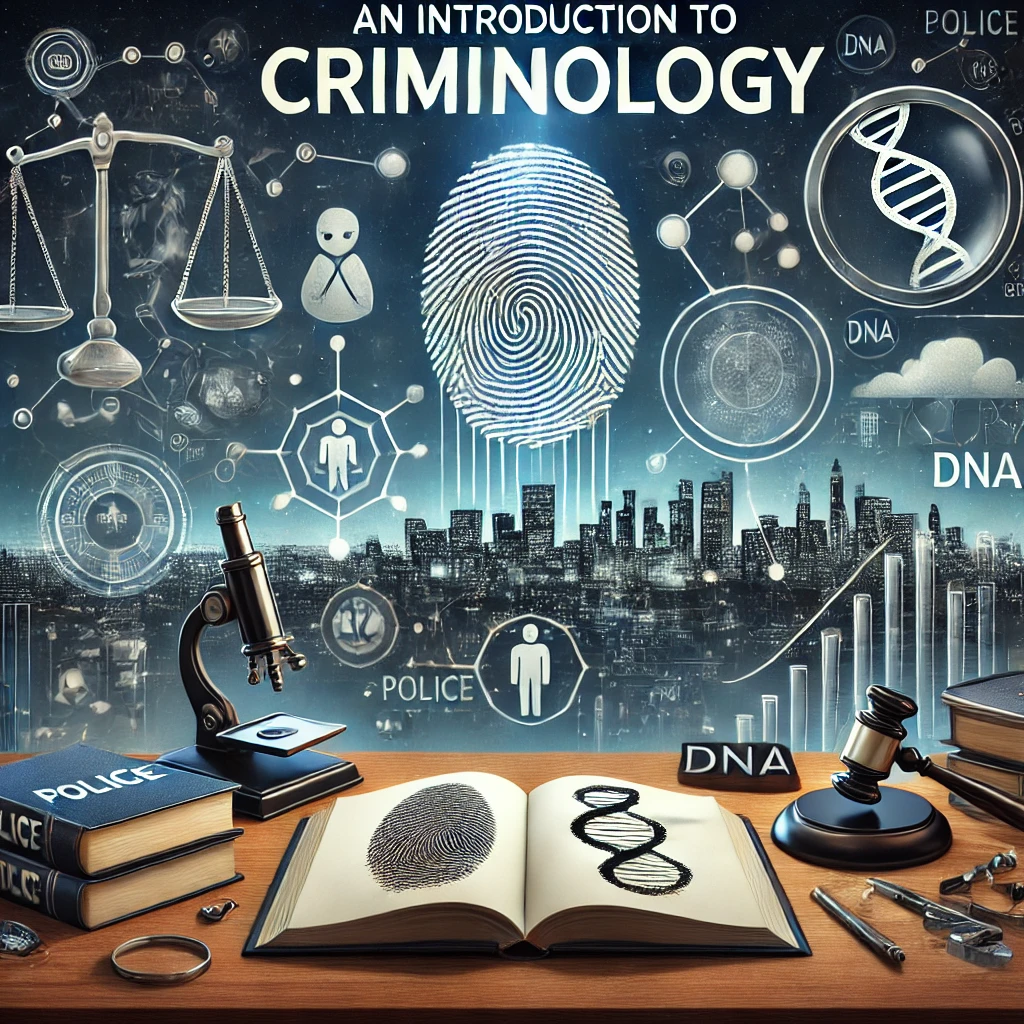
Chapter 7: Types and Classifications of Crimes
Classifying crimes is essential for addressing them effectively. Crimes range from financial crimes like fraud and money laundering to violent crimes and cybercrimes, which have become increasingly common in the digital age. Classifying crimes helps direct the appropriate efforts to tackle each, as strategies for combating financial crimes differ from those used to confront violent crimes.
Beyond this, classification plays a critical role in legal systems and criminological research, allowing professionals to better understand criminal patterns, allocate resources efficiently, and develop specialized prevention strategies. For instance, white-collar crimes such as corporate fraud, insider trading, and embezzlement, although often non-violent, can cause extensive financial damage and social harm, requiring forensic accounting and regulatory intervention.
On the other hand, violent crimes directly affect the safety and well-being of individuals and communities, which demands swift law enforcement responses and often psychological support for victims. The growing presence of cybercrime further complicates classification efforts, as these offenses often transcend national borders, involving complex digital forensics and international cooperation.
In short, an accurate understanding of crime classifications allows both policymakers and law enforcement agencies to implement effective criminal justice strategies, ensuring that each category of crime is met with the appropriate response.
Chapter 8: Criminal Justice and Punishment
The judicial and criminal systems are the cornerstones of deterring crimes and achieving justice. Understanding punishment systems helps us see how penalties have evolved over time and their impact on criminal behavior. This system aims to balance penalizing offenders and ensuring they do not return to crime through rehabilitation programs.
Throughout history, societies have experimented with different forms of punishment, ranging from physical retribution and exile to incarceration, fines, and community service. Modern criminal justice systems emphasize a more balanced approach that considers both the nature of the offense and the potential for rehabilitation.
Punishment is not merely about retribution; it also serves to protect the public, offer restitution to victims, and discourage others from committing similar acts. Sentencing structures are designed to reflect the severity of the crime, the circumstances surrounding it, and the criminal’s prior record. Courts often weigh these factors to ensure fairness while preserving social order.
Ultimately, the criminal justice system does more than punish — it strives to foster rehabilitation and facilitate the reintegration of offenders into society, contributing to long-term crime reduction.
Chapter 9: Criminal Rehabilitation
Rehabilitation of offenders is the step that aims to reform individuals into productive members of society. The success of rehabilitation programs depends on providing a supportive environment and positive guidance, helping prevent reoffending by steering individuals away from criminal behavior.
Rehabilitation is grounded in the belief that criminal behavior can often stem from deeper psychological, economic, and social issues, which must be addressed for true behavioral change. This process typically involves access to counseling, education, vocational training, and ongoing support systems designed to help offenders rebuild their lives.
In addition to individual transformation, successful rehabilitation programs also consider family reunification, community acceptance, and employment opportunities — all of which play a key role in minimizing recidivism. Modern rehabilitative models focus on both accountability and empathy, encouraging offenders to recognize the harm they’ve caused while equipping them with the skills and mindset necessary for a law-abiding future.
Rehabilitation is, therefore, not only a legal or institutional effort but also a social responsibility, as the reintegration of reformed individuals directly enhances community safety and cohesion.
Chapter 10: Cybercrime
With the increasing reliance on technology, cybercrime has become a significant area of concern. This includes crimes committed over the internet, such as electronic fraud, cyber-attacks, and identity theft. Cybercrime requires modern techniques to combat it, as well as heightened awareness from individuals and institutions alike.
The digital landscape has created new opportunities for criminal enterprises, where borders and physical distances are virtually irrelevant. Cybercriminals exploit weaknesses in software, networks, and human psychology, often deploying advanced tactics like phishing, malware, ransomware, and social engineering to gain unauthorized access to sensitive information.
Beyond the direct financial and emotional harm caused to victims, cybercrime can destabilize institutions, disrupt infrastructure, and compromise national security. Therefore, effective countermeasures include not only technical defenses such as firewalls and encryption but also public education on safe online behavior and international collaboration to track and apprehend perpetrators.
As technology continues to evolve, so too will cybercrime, making vigilance and innovation essential components in the ongoing fight against this modern criminal threat.
Conclusion
Criminology plays a vital role in building a safe and just society, allowing us to understand the nature of crime, its motivations, and its various dimensions. As the modern world becomes increasingly complex, criminology remains the primary field that enables us to face the challenges of criminal behavior and achieve justice through a comprehensive system of understanding, analysis, and application.
The study of criminology not only informs law enforcement strategies but also shapes public policy, judicial decisions, and social reform. By examining the psychological, sociological, economic, and cultural influences on crime, criminology empowers professionals to design more effective prevention measures and fairer systems of justice.
In a world where both traditional and emerging crimes coexist, the insights offered by criminological research help ensure that justice evolves with society — building pathways not only for punishment but also for prevention, education, and rehabilitation. Criminology, in essence, bridges the gap between understanding crime and creating a more secure and humane world.

